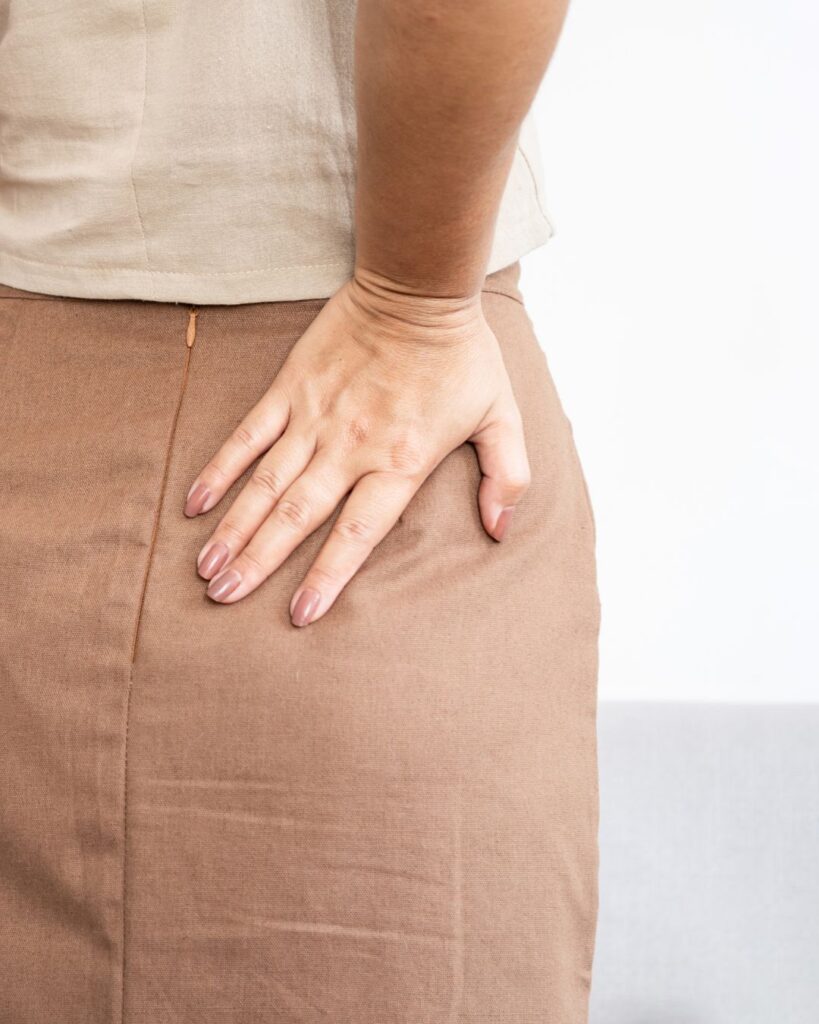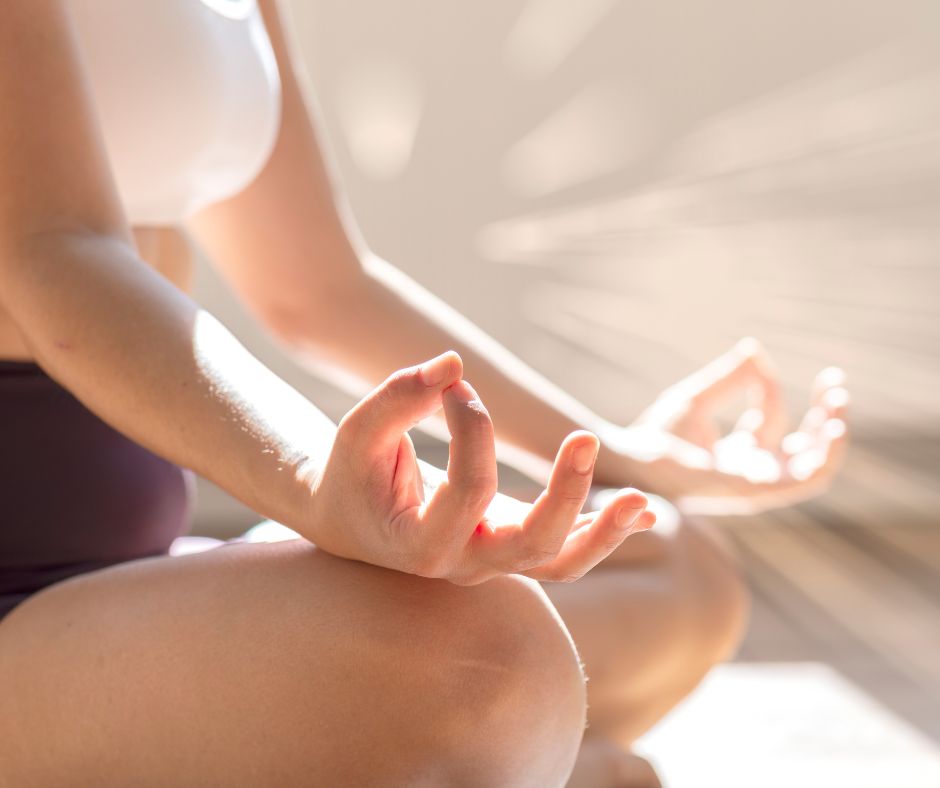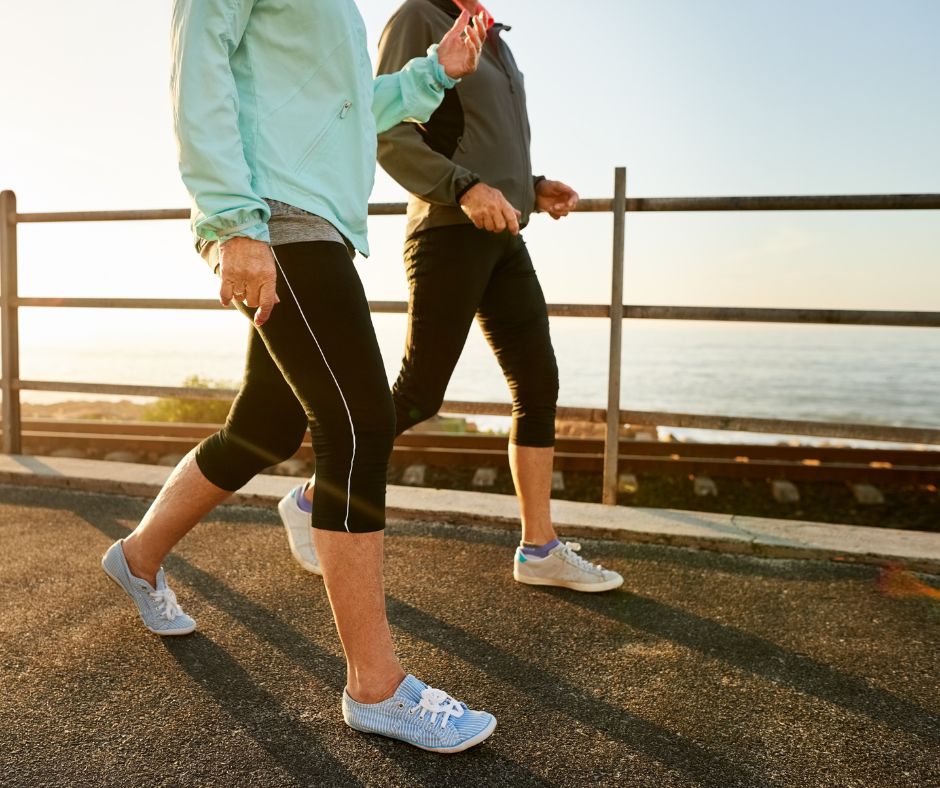Postmenopausal hip pain can feel sneaky and persistent, showing up as stiffness, soreness, or deep aches that disrupt daily life. In my work as a menopause health coach, I’ve seen how understanding the root causes can lead to real relief. This blog offers gentle, science-backed ways to support your hips and feel more confident in your movement.
Why Does My Hip Hurt Now?

If you’ve noticed your hips feeling tighter, achier, or just not as reliable as they used to be, it’s more common that most women expect.
Postmenopausal hip pain is a frequent complaint in midlife, and it’s often misunderstood. The good news? There are clear reasons behind it – and even better, there are ways to feel better.
Let’s start with what’s happening beneath the surface.
Hormones, Bones, and the Hip Connection
Estrogen plays a protective role in bone density, joint lubrication, and muscle function. When estrogen levels drop after menopause, the body becomes more vulnerable to inflammation, stiffness, and wear-and-tear injuries. The hip joint, being one of the largest weight-bearing joints, often takes the brunt of these changes.
Postmenopausal hip pain can stem from:
- Osteoarthritis: The cartilage cushioning your hip may thin out, leading to bone-on-bone friction.
- Tendinitis or bursitis: Inflammation in the soft tissues around the hip can cause sharp or burning pain.
- Muscle imbalances: Hormonal shifts can affect muscle tone, leading to strain or compensation patterns.
- Bone density loss: Osteoporosis may increase the risk of stress fractures or joint instability.
7 Gentle Fixes for Postmenopausal Hip Pain
These strategies are designed to support your hips without pushing through pain or relying on quick fixes. Think of them as daily invitations to move with care, nourish with intention, and rebuild trust in your body.
Movement and mindfulness


1. Low-impact exercise
Activities like swimming, walking, and yoga can help maintain mobility and circulation without stressing the joints. Even short, consistent sessions can reduce stiffness and improve mood, especially when paired with fresh air or gentle sunlight.
2. Stretching
Daily hip openers, hamstring stretches, and pelvic tilts can ease tension and improve flexibility.
3. Strength training
Building strength in the glutes, thighs, and core helps stabilize the hip joint and reduce strain. Resistance bands, bodyweight exercises, or light weights can be incredibly effective, especially when done with proper form and consistency.
4. Mindful posture
Paying attention to how you sit, stand, and move throughout the day can prevent strain and support alignment. Small shifts like uncrossing your legs or adjusting your pelvis can make a big difference over time.
Nutrition and Bone health
5. Calcium, Vitamin D and Magnesium
These are essential are essential for bone strength, muscle function, and recovery. Include leafy greens, fortified plant milks, fatty fish, and magnesium-rich foods like pumpkin seeds, almonds, and lentils.
6. Anti-inflammatory foods
Omega-3s, berries, turmeric, and leafy greens can help calm joint inflammation and support overall comfort. These foods don’t just reduce pain, they nourish your body’s ability to repair and thrive.
7. Protein
Muscle maintenance becomes more important after menopause, so aim for steady protein intake throughout the day.
Explore my hormone-friendly recipe collection for nutrient-rich meals that nourish bones, reduce inflammation, and feel good to eat.
When to Seek Support
If postmenopausal hip pain is interfering with sleep, mobility, or your ability to enjoy life, it’s worth checking in with a healthcare provider. A physical therapist, menopause specialist, or integrative practitioner can help identify the root cause and create a personalized plan.
FAQs
Can I still exercise if my hips hurt?
Yes, it’s often one of the best things you can do. Gentle, low-impact movement like walking, swimming, or yoga can improve circulation, reduce stiffness, and support joint health. The key is consistency, not intensity.
Do I need supplements for postmenopausal hip pain?
It depends. Calcium, vitamin D, and magnesium are often helpful for bone health, while omega-3s and anti-inflammatory foods can support joint comfort. I often recommend MagneCal D to clients navigating postmenopausal hip pain. It’s a balanced blend designed to support bone density, muscle function, and recovery. See the link for details on how it works and why it matters.
Is this pain permanent?
Not necessarily. With the right mix of movement, nutrition, and support, many women find lasting relief. The earlier you address it, the better your chances of reversing or managing the discomfort.
What Your Hips Might Be Whispering
Postmenopausal hip pain isn’t just a sign of aging, it’s a signal from your body asking for support. With the right mix of movement, nourishment, and care, your hips can stay strong, flexible, and pain-free for years to come.
Want more insights like this delivered with heart and science?
Join my newsletter for practical tips, emotional support, and fresh ways to feel at home in your body again.
+ show Comments
- Hide Comments
add a comment